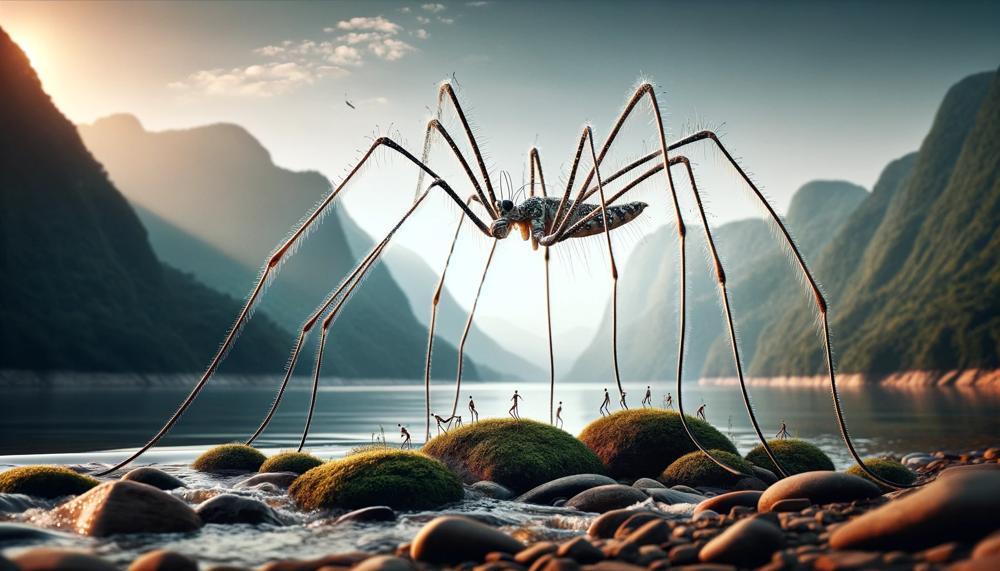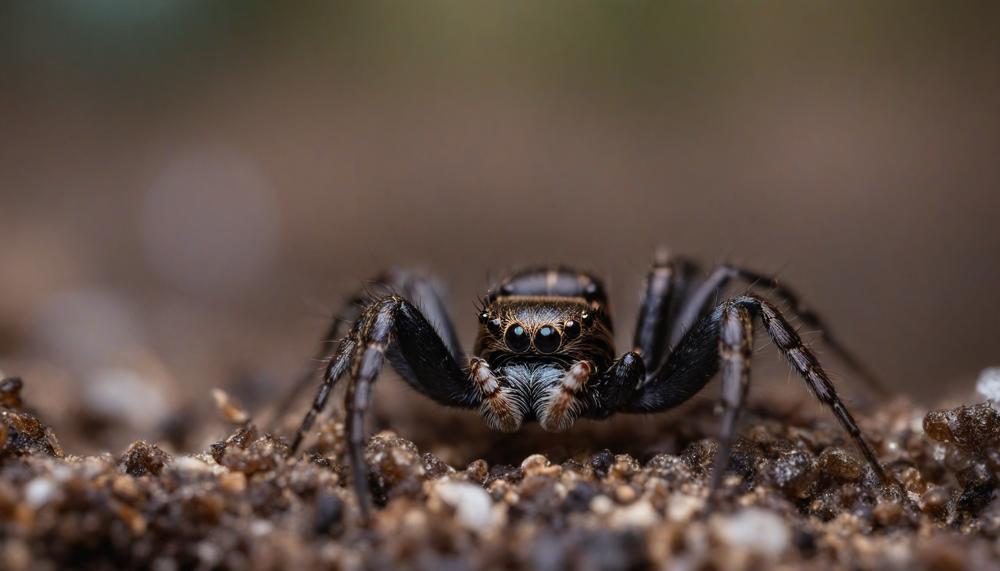Daddy longlegs: those spindly-legged creatures that often invade our homes and gardens. While they may look creepy and crawly, are they really a threat to our furry companions? The answer may surprise you.
In this blog post, we’ll delve into the world of daddy longlegs and their relationship with dogs, separating myth from fact.
So, are daddy long legs poisonous to dogs?
No, daddy long legs are not poisonous to dogs. In fact, they are not harmful to any mammal and are unlikely to cause any adverse reactions to pets. Daddy long legs are passive towards humans and won’t go out of their way to bite, even if they could.
Daddy long legs are spiders with long, skinny legs and small brown bodies. They are common all over the world and like to hide in the corners of rooms, furniture, and sheltered areas.
In addition, daddy long legs are non-toxic, so your dog will be absolutely fine in that respect. If your dog eats a daddy long leg, it’s completely harmless to them.
Join us as we uncover the truth about their potential toxicity and provide valuable insights to keep your canine friends safe.
Table of Contents
The Misconception: Are Daddy Longlegs Spiders?
Daddy longlegs, also known as harvestmen or harvester spiders, are often mistaken for spiders. However, they are not true spiders. They belong to a different order of arachnids called Opiliones.
Daddy longlegs have two main body segments, long, thin legs, and no fangs or venom. True spiders, on the other hand, have two main body segments, shorter, thicker legs, and fangs that inject venom.
Daddy longlegs are harmless to humans, while some spiders can be dangerous. The venom of the black widow spider, for example, can cause serious illness or even death.
So, while daddy longlegs and spiders share some similarities, they are not the same creature. Daddy longlegs are a unique group of arachnids with their own unique characteristics.
| Daddy Longlegs | Spiders |
|---|---|
| Opiliones order | Araneae order |
| Two main body segments | Two main body segments |
| Long, thin legs | Shorter, thicker legs |
| No fangs or venom | Have fangs and venom |
| Harmless to humans | Some can be dangerous to humans |
Daddy Longlegs Venom: A Closer Look
Daddy longlegs venom, while not typically fatal to dogs, can cause a range of adverse reactions if ingested. The venom’s components, including serotonin, histamine, proteolytic enzymes, and neurotoxins, work together to produce these effects.
| Component | Effect on Dogs |
|---|---|
| Serotonin | Causes vomiting, diarrhoea, and abdominal pain. |
| Histamine | Leads to swelling, redness, and itching. |
| Proteolytic enzymes | Damages tissues and proteins, leading to cell death. |
| Neurotoxins | Affects the nervous system, causing paralysis and tremors. |
The severity of these effects depends on the amount of venom ingested and the individual dog’s sensitivity. While most cases of daddy longlegs venom ingestion in dogs are mild and self-limiting, it’s important to seek veterinary attention if your dog exhibits any concerning symptoms.
If you suspect your dog has ingested a daddy longlegs, monitor them closely and contact your veterinarian immediately. Treatment may involve supportive care, such as administering antihistamines to reduce inflammation or fluids to prevent dehydration. In severe cases, hospitalisation and intensive care may be necessary.
Prevention is always better than cure. Keep your dog away from areas where daddy longlegs are common, and discourage them from eating insects or other small creatures. By taking these precautions, you can help protect your furry friend from the potential dangers of daddy longlegs venom.
The Truth Unraveled: Daddy Longlegs and Dog Interactions
| Canine Consumption: Daddy Longlegs Ingestion and its Impact on Dogs |
| Daddy longlegs, those spindly-legged arachnids, are often encountered by our canine companions. Although they may elicit fear or disgust in some, the question arises: do these creatures pose a threat to our beloved dogs if ingested? |
| The Verdict: Generally Benign, with Rare Exceptions |
| In the vast majority of cases, daddy longlegs are not harmful to dogs if ingested. These arachnids lack the venomous fangs or toxic secretions possessed by other insects, such as spiders. Their primary defense mechanism is their ability to release a foul-tasting liquid that deters predators, including dogs. |
| Potential Risks: Individual Sensitivities and Allergic Reactions |
| While daddy longlegs are generally harmless, some dogs may exhibit individual sensitivities or allergic reactions to their ingestion. These reactions can manifest as gastrointestinal upset, such as vomiting or diarrhoea, or in severe cases, anaphylaxis. Dogs with known allergies to insects or arachnids should be closely monitored if they come into contact with daddy longlegs. |
| Prevention: Minimising Exposure to Daddy Longlegs |
| To minimise the risk of daddy longleg ingestion, pet owners can take several preventive measures. These include: |
| – Keeping homes and yards free of debris and clutter, where daddy longlegs tend to congregate |
| – Using insect repellents or barriers to deter daddy longlegs from entering homes |
| – Supervising dogs during outdoor activities to prevent them from intentionally or accidentally ingesting daddy longlegs |
| Conclusion: A Low-Risk Encounter |
| In conclusion, daddy longlegs pose minimal risk to dogs if ingested. However, individual sensitivities and allergic reactions can occur. By taking preventive measures, pet owners can help reduce the likelihood of daddy longleg ingestion and its associated risks. |
Common Myths and Misconceptions Debunked
| Myth | Misconception | Truth |
|---|---|---|
| Daddy long legs are spiders. | They are often mistaken for spiders due to their long legs and small bodies. | Daddy long legs are actually members of the Opiliones order, which is distinct from spiders. |
| Daddy long legs are poisonous. | They are believed to have a venomous bite that can cause severe harm to dogs. | Daddy long legs do not possess venom glands and are incapable of biting or injecting venom. |
| Daddy long legs can cause paralysis in dogs. | The myth claims that their venom can lead to paralysis and even death in dogs. | There is no scientific evidence to support this claim. Daddy long legs do not have the necessary venom or fangs to cause paralysis in dogs. |
| Daddy long legs are aggressive toward dogs. | They are often portrayed as aggressive creatures that will attack dogs unprovoked. | Daddy long legs are generally shy and non-confrontational. They do not have the temperament or physical capabilities to attack dogs. |
| Daddy long legs should be exterminated to protect dogs. | Some people believe that eradicating daddy long legs is necessary to safeguard dogs from their perceived threat. | Daddy long legs are harmless to dogs and play a beneficial role in the ecosystem by consuming insects. Exterminating them would disrupt the natural balance and potentially harm other animals. |
Potential Risks to Dogs: Beyond Venom
| Additional Hazards | Risks |
|---|---|
| Choking | Daddy long legs have long, thin bodies that can easily become lodged in a dog’s throat, causing choking. This is especially dangerous for small dogs or puppies. |
| Gastrointestinal Blockage | If a dog swallows a daddy long leg, the insect’s sharp legs can cause irritation and blockage in the digestive tract. This can lead to vomiting, diarrhoea, and abdominal pain. |
| Allergic Reaction | Some dogs may be allergic to daddy long legs. Symptoms of an allergic reaction can include itching, swelling, and difficulty breathing. |
| Infection | Daddy long legs can carry bacteria and parasites that can be transmitted to dogs through bites or contact with their bodily fluids. These infections can range from mild to serious. |
Signs and Symptoms of Daddy Longlegs Ingestion in Dogs
| Signs and Symptoms | Description |
|---|---|
| Vomiting | Dogs may vomit after ingesting daddy longlegs, as their bodies try to expel the foreign object. |
| Diarrhea | Diarrhea is another common sign of daddy longlegs ingestion, as the digestive system is irritated by the insect’s chemicals. |
| Lethargy | Dogs may become lethargic or tired after ingesting daddy longlegs, as their bodies work to process the toxins. |
| Loss of appetite | Dogs may lose their appetite after ingesting daddy longlegs, as their digestive system is upset. |
| Abdominal pain | Dogs may experience abdominal pain after ingesting daddy longlegs, as the chemicals in the insect can irritate the stomach and intestines. |
| Excessive salivation | Dogs may drool or salivate excessively after ingesting daddy longlegs, as their bodies try to flush out the toxins. |
| Tremors | Dogs may experience tremors or shaking after ingesting daddy longlegs, as the toxins can affect their nervous system. |
| Seizures | In severe cases, dogs may experience seizures after ingesting daddy longlegs, as the toxins can cause neurological damage. |
| Death | In rare cases, dogs may die after ingesting daddy longlegs, if the toxins cause severe organ damage or if the dog is very small. |
Conclusion
Daddy longlegs, those spindly-legged creatures that frequent our homes and gardens, are often shrouded in misconceptions regarding their toxicity to our canine companions. While they may look creepy and crawly, the truth is that daddy longlegs pose minimal risk to dogs.
They lack venomous fangs or toxic secretions, and their primary defense mechanism is a foul-tasting liquid that deters predators.
However, individual sensitivities and allergic reactions can occur, leading to gastrointestinal upset or, in severe cases, anaphylaxis. Prevention is key, and pet owners can minimize exposure by keeping homes and yards free of debris, using insect repellents, and supervising dogs outdoors.
Remember, daddy longlegs play a beneficial role in the ecosystem, and their eradication should be avoided.





